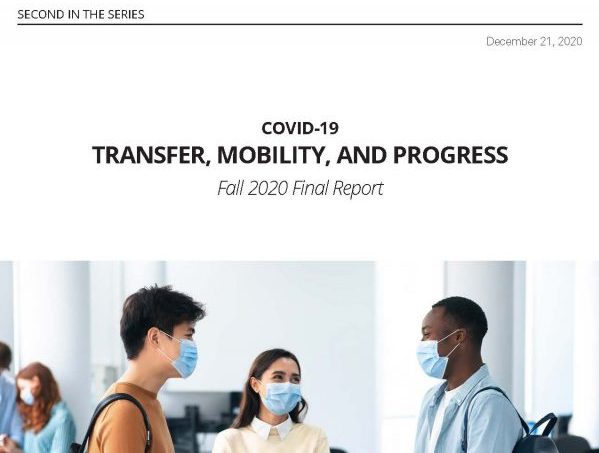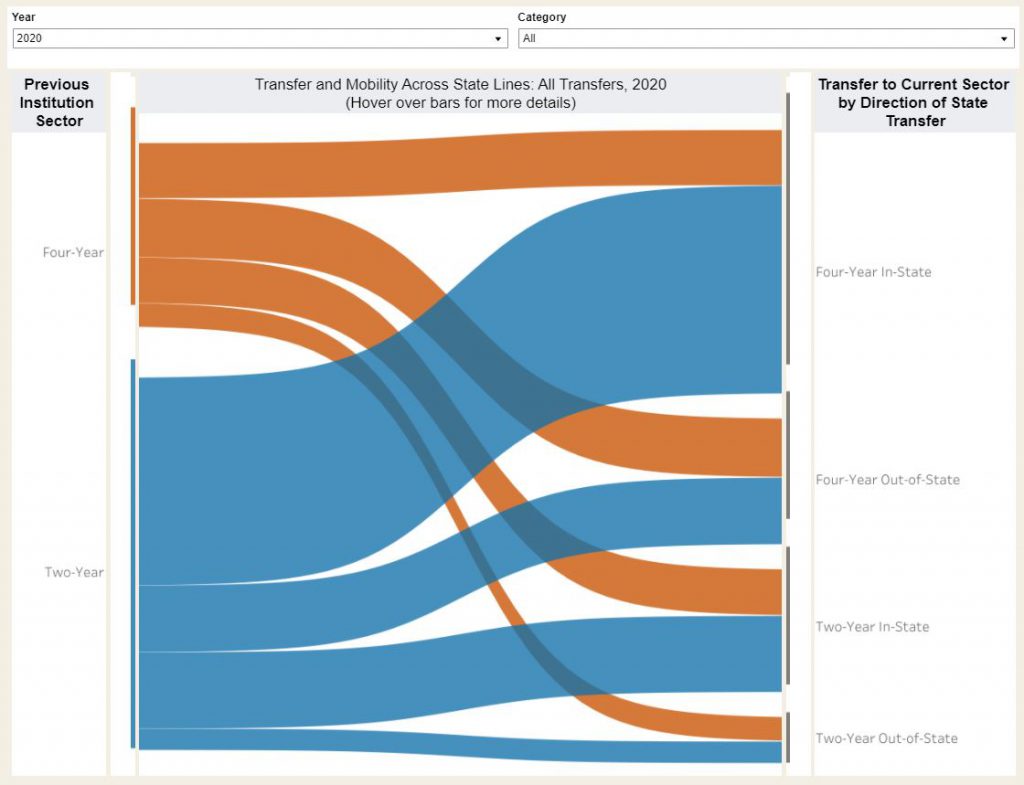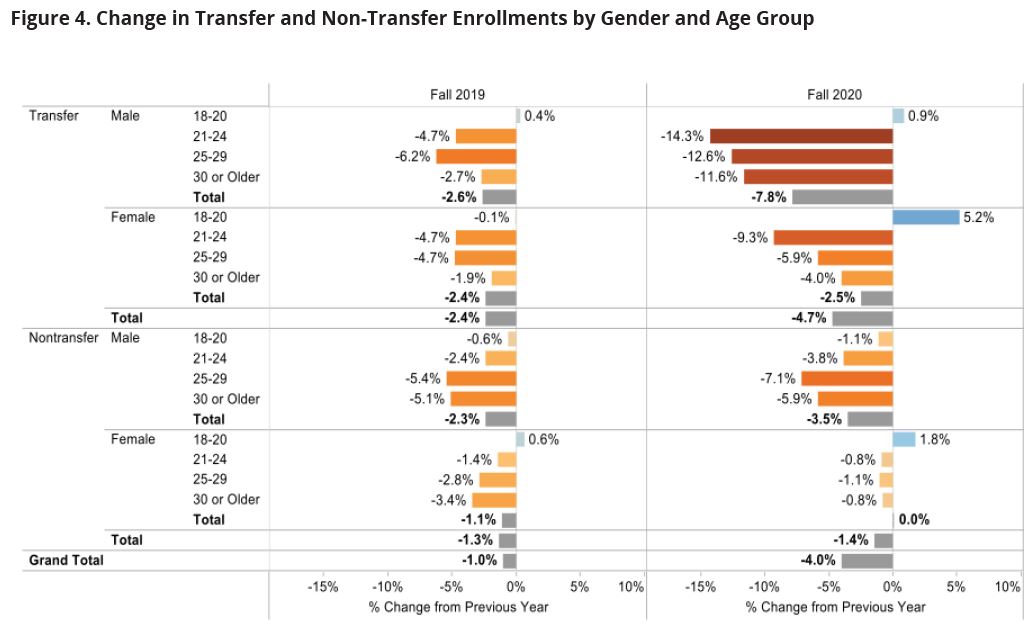How colleges are reenrolling stopped-out students during the pandemic
By Natalie Schwartz, Higher Ed Dive, November 23, 2020
A number of higher education institutions across the country have been reaching out to students who had stopped out of their degree program to encourage them to re-enroll and finish via online learning. Roughly 36 million adults in the United States have college credits but no degree. According to the article, “online learning is helping some colleges and organizations make inroads with this population despite the pandemic.” Students drop out or stop out of school for a myriad of reasons, so institutions must take that into account when students re-enroll. Some of the incentives that schools are offering include: financial aid, lower tuition, support from coaches and advisors, or credit for prior learning assessments. Many institutions began these efforts before the pandemic, but re-enrollment has remained steady this semester as students need to upgrade skills or simply, finally, finish that degree.
Why Don’t Students Graduate on Time?
By Allegra Lubar, Vemo Education, November 19, 2020
This essay examines various factors that contribute to delayed graduation. In addition to financial reasons – a significant and common problem – “transferring, working, changing majors, juggling too many obligations, and failing to forge social connections at school” are obstacles for many students. They prevent students from taking a full course load, which is “crucial for on-time graduation.” Institutions can help students understand the scope of the problem through public campaigns that encourage full course loads and why students will benefit (on-time graduation, entering the workforce sooner, less money spent on tuition, and thus, perhaps, less money owed in student loans). Institutions can also provide financial aid to students through pay-for-success programs like income-share agreements and expanded career services.
College completion rate stays flat: report
By Hallie Busta, Higher Ed Dive, Pearson, December 3, 2020
This short summary of data reported by the National Student Clearinghouse highlights the slowing rate of college completion across the U.S. Data is reported on the six-year graduation rates of undergraduate learners who started in the fall of 2014, including transfers; the completion data was collected through June 2020. The changes have been slight and not all students and institutions are experiencing the trend in the same way. Community colleges reported a 0.5 percentage point decrease in completion after two years of growth; drops at two-year schools were steepest among Black and Hispanic students. However, completion rates for Black students at public four-year colleges increased by one percentage point. Black men in particular had the biggest decrease in stop-out rates. The COVID pandemic has hit two-year public schools hardest, and fewer undergraduates are attending all U.S. colleges this fall – factors that will continue to slow completion rates.
More California community college students are taking transfer-level courses, but critics say colleges must do more
By Michael Burke, EdSource, December 8, 2020
Two new reports examine the outcomes of legislation passed in 2017 in the state of California – AB 705 – which was intended to boost community college completion rates by allowing students access to transfer-level courses without first taking remedial classes. Studies have shown that students placed in remedial classes, primarily English and math, rarely go on to complete degrees or earn certificates, yet many of them likely could have passed transfer-level classes if allowed access. A new report from the Public Policy Institute of California shows that the law, which went fully into effect last fall, has indeed increased the number of students who enroll in transfer-level courses, and has also narrowed gaps between white students and students of color in accessing transfer-level English and math courses. Despite this progress, over half of the state’s degree-granting community colleges still offer remedial introductory math courses; only three offered no remedial math courses this semester. By law, students cannot be denied access to transfer-level courses, but if remedial courses are their first option, the standard of the law is being violated. The Public Policy Institute of California and the California Acceleration Project, which advocates for eliminating remedial classes altogether to increase completion rates, analyze results and compliance with the new law in the following new reports.
- Public Policy Institute of California, A New Era of Student Access at California’s Community Colleges.
- California Acceleration Project, Still Getting There: How California’s AB 705 Is (and is not) Transforming Community College Remediation and What Needs to Come Next.
What community colleges can teach higher ed about supporting students during and beyond the pandemic
By Xueli Wang, Inside Higher Ed, November 18, 2020
This opinion piece draws from a longitudinal study cohort that the author has followed for six years. She recently conducted interviews of 30 students from that cohort on their community college experiences in the wake of the COVID-19 pandemic. Wang contends that community colleges “are sites of agile adaptation and innovation, perpetually responsive to emerging societal needs.” Students praised their colleges for their focus on the following factors:
- Practicality of training and research capacity
- Technology and communication skills in virtual formats
- Cultivating resilience
- Diversity as a highlight of education
- An education for the community.
Wang offers all higher education institutions three takeaways gleaned from her research:
- Build a stronger curriculum to help students thrive in crisis and a rapidly changing world.
- Establish more purposeful, meaningful and structured opportunities for students to engage with their community.
- Encourage support-seeking and cultivate multiple levels of connection.
Xueli Wang is the Barbara and Glenn Thompson Professor in Educational Leadership and a professor of higher education in the department of educational leadership and policy analysis at the University of Wisconsin, Madison.
Private Iowa college partners with all state’s community colleges on transfer
By Madeline St. Amour, Inside Higher Ed, November 17, 2020
Clarke University, a private institution located in Dubuque, Iowa, has entered into a partnership with all 15 of the state’s community colleges to create a transfer pathway for students in eight different degree programs. Students in these pathways who transfer to Clarke with an associate degree are guaranteed junior standing. The partnership was championed by the university’s new president, Thom Chesney, who recognized that Clarke needed to respond to community needs as well as put students first. National Student Clearinghouse data indicate students who transfer to private colleges can lose up to 40 percent of their credits. On the other hand, private universities have higher graduation rates, potentially more individualized attention, and financial aid for students. In fact, Clarke University will provide scholarships for transfer students when they are admitted. School leaders and staff must ensure that the transfer students receive the support they need to complete their degrees. This partnership signals Clarke’s commitment to students and its openness to diversity.
Transfer Is Workforce Development: A reminder of a basic truth
By Matt Reed, Inside Higher Ed, December 3, 2020
The author revisits an essay published in 2016 about the merits of a liberal arts education and how it, along with the general education curriculum, prepares students for the workforce. Two-year degrees can look “unfocused,” but Reed makes the point that they are part of a whole, i.e., the baccalaureate. And the general education curriculum needed – no, required – to earn the four-year degree provides the skills and information students need to succeed in the workforce: communication, analytical thinking, teamwork, and problem solving – proficiencies that employers want.
New ACE Network Will Help Students Earn College Credit for Prior Learning
American Council on Education, December 3, 2020
The American Council on Education (ACE) has created a network of colleges and universities that will ensure learners can easily transfer ACE credit recommendations for prior learning experience toward completion of a degree or credential. The initiative will utilize portable, digital credentials supported by postsecondary standards. Higher education institutions that make up the network will guarantee acceptance of ACE credit recommendations to support flexible academic completion pathways. The two-year project is supported by a grant from ECMC Foundation.
ACE will use the Passport Learning Outcomes (PLOs) as one method of assessing learning. Specifically, ACE will use the PLOs as a framework for evaluating general education, college-level knowledge and skills embedded in some of the extra-institutional learning opportunities. The specific PLOs achieved by a learner will appear on a new digital transcript on Credly’s Acclaim platform, which institutions can use to translate students’ documented knowledge and skills into courses for general education credit. The PLOs provide colleges and universities with more depth as to what ACE transcript holders know and are able to do as they consider credit recommendations.
The population that makes up post-traditional learners are adult students who bring multiple sources of learning. However, current practice and policies impede the transfer and award of credit for these learning experiences and undermine success for these students. This new network seeks to recognize and validate learning to facilitate students’ ability to earn a credential or degree.
Supporting Student Transfer During COVID
Webinar, League for Innovation in the Community College, December 2020
Moderator: Rufus Glasper, President and CEO, League for Innovation in the Community College
Presenters: Sylvia Jenkins, President, Moraine Valley Community College; Seppy Basili, Executive Director, Jack Kent Cooke Foundation; Kathleen DeLaski, Founder, Education Design Lab
This hour-long webinar discusses how community colleges can support their students in this unprecedented time and, most importantly, keep those students on the path to degree completion by facilitating transfer. “Now more than ever community colleges must play a critical role in providing access and fostering social mobility for students.” Presenters discuss the effective initiatives and strategies at their institutions and organizations and highlight the importance of faculty and advisors.







